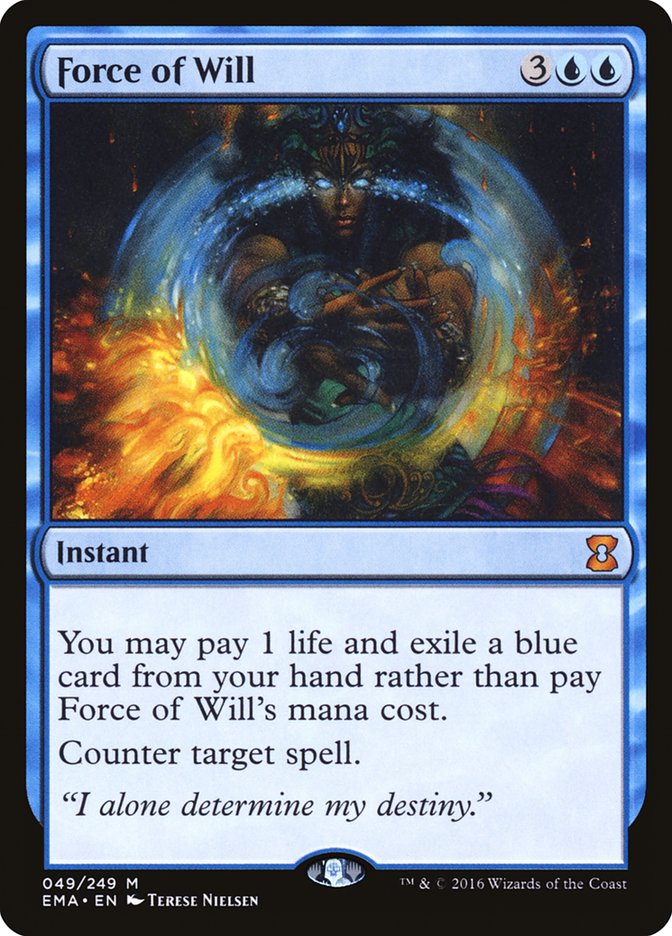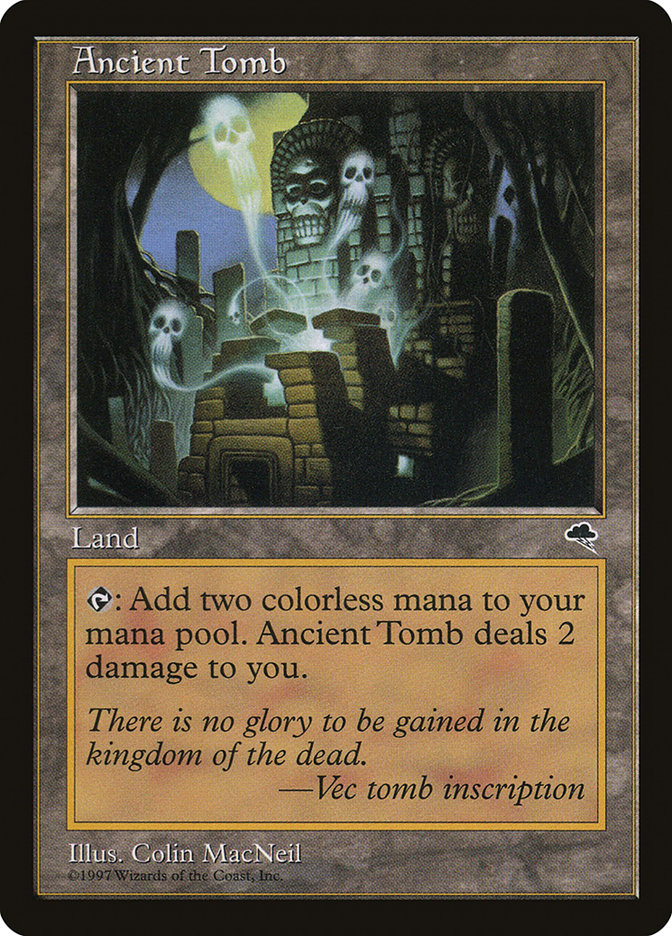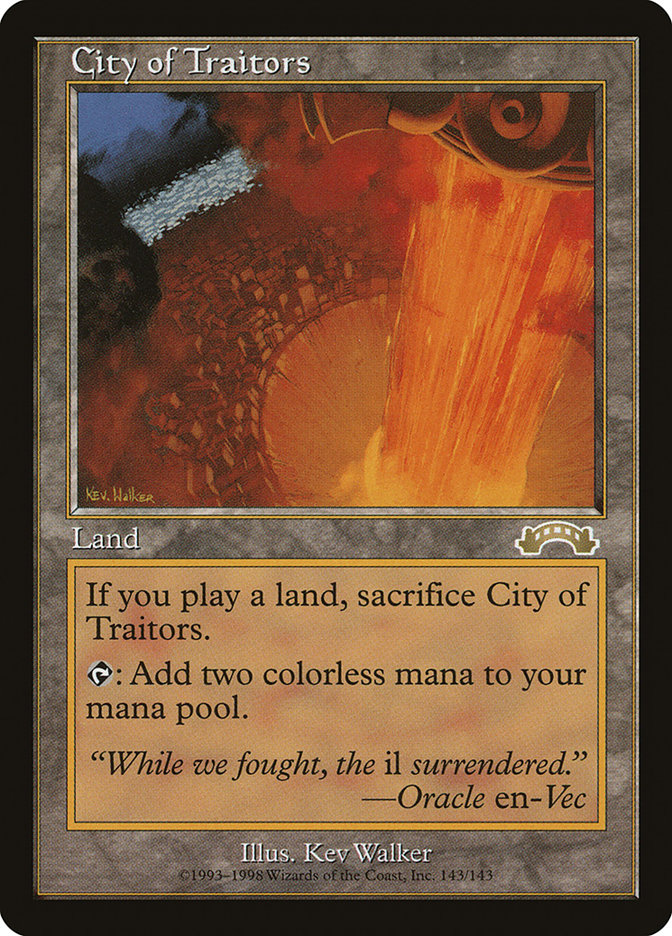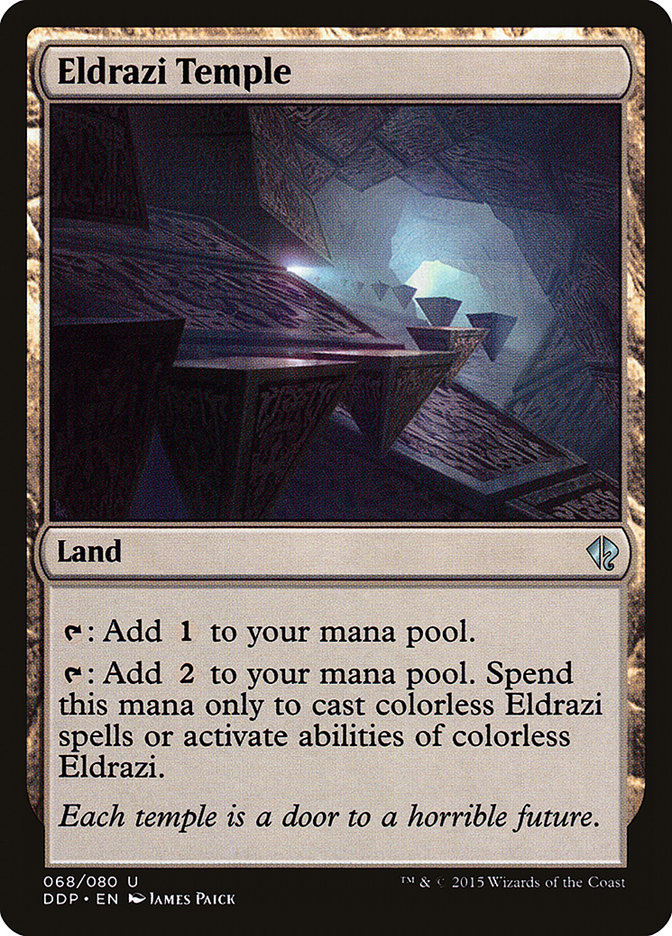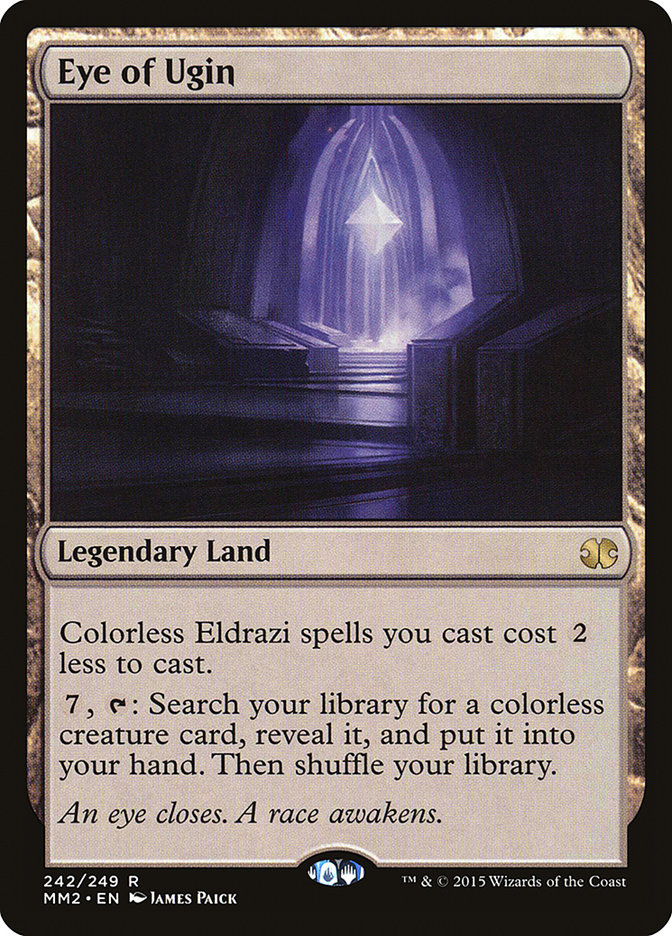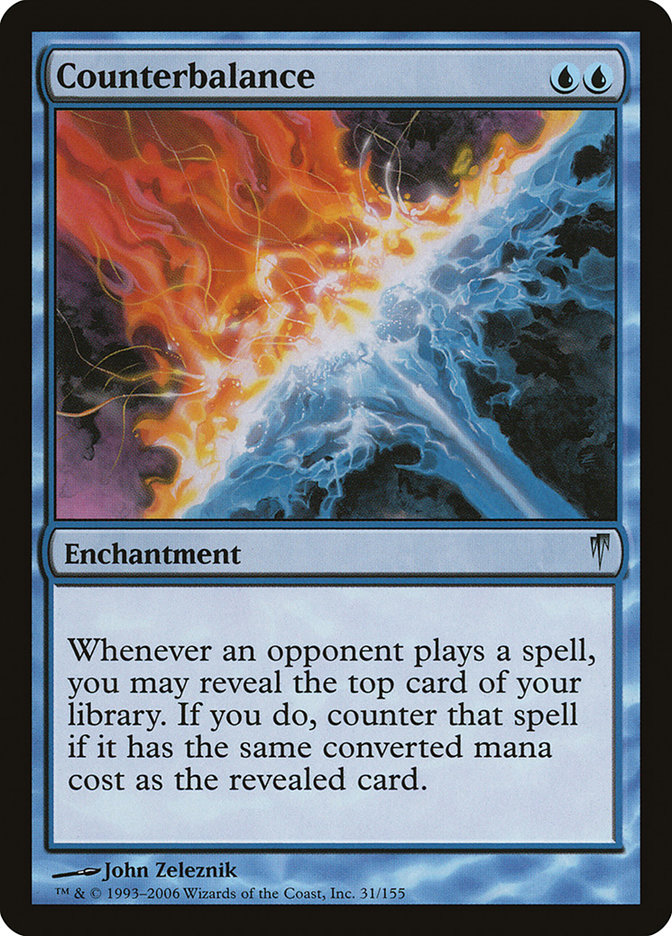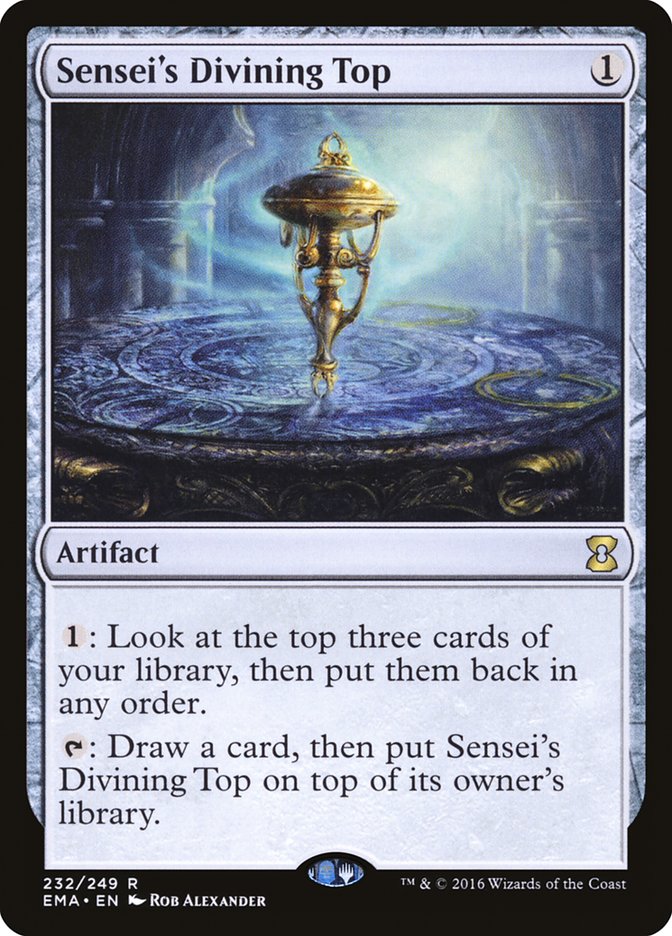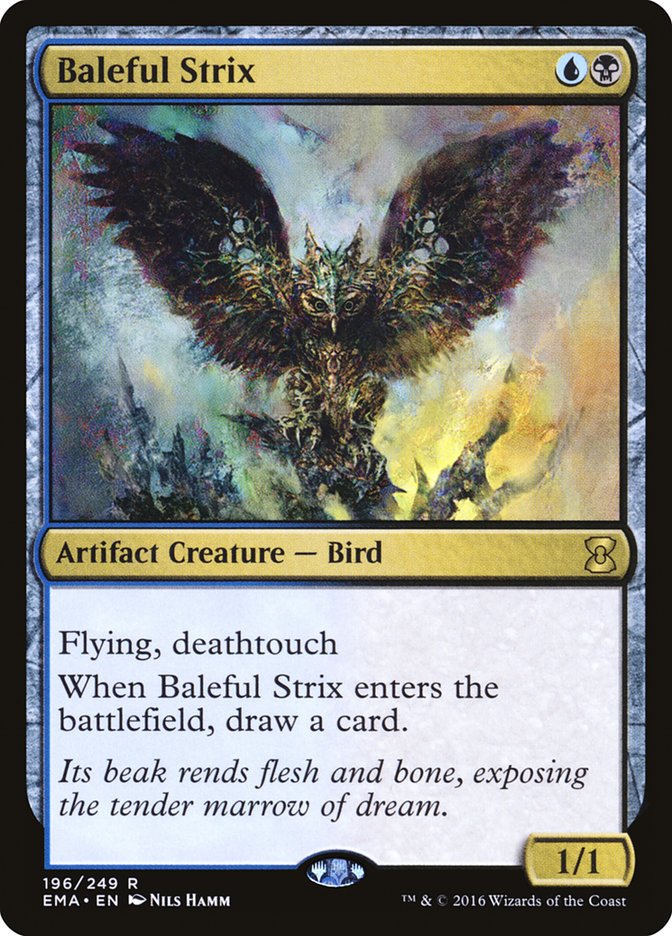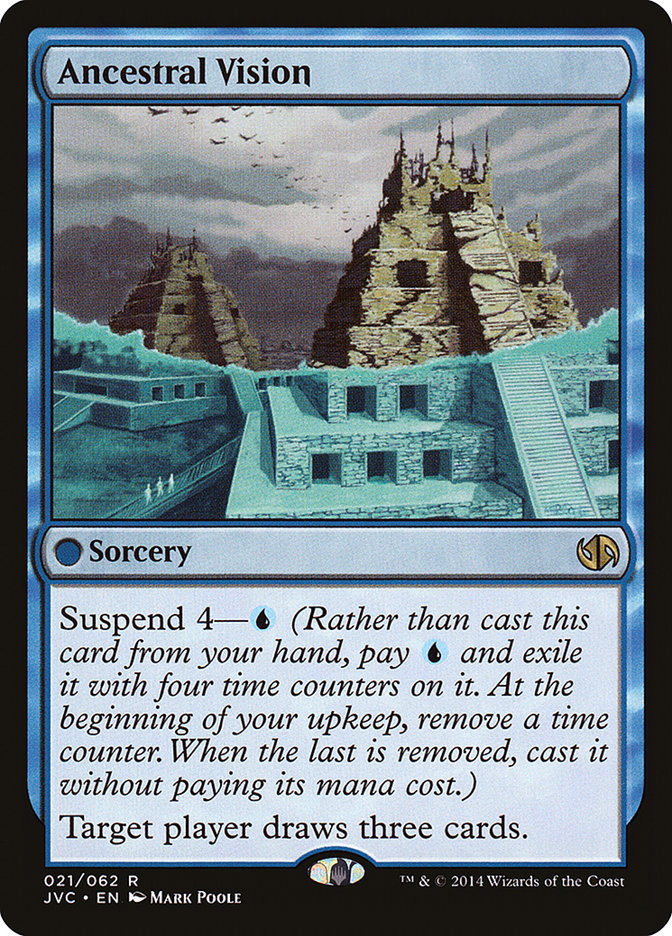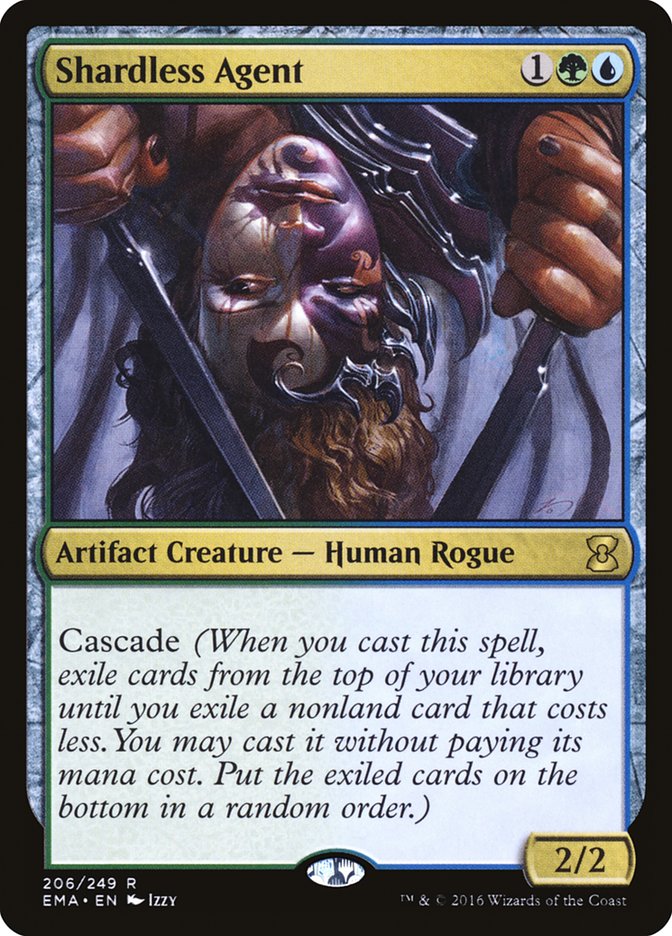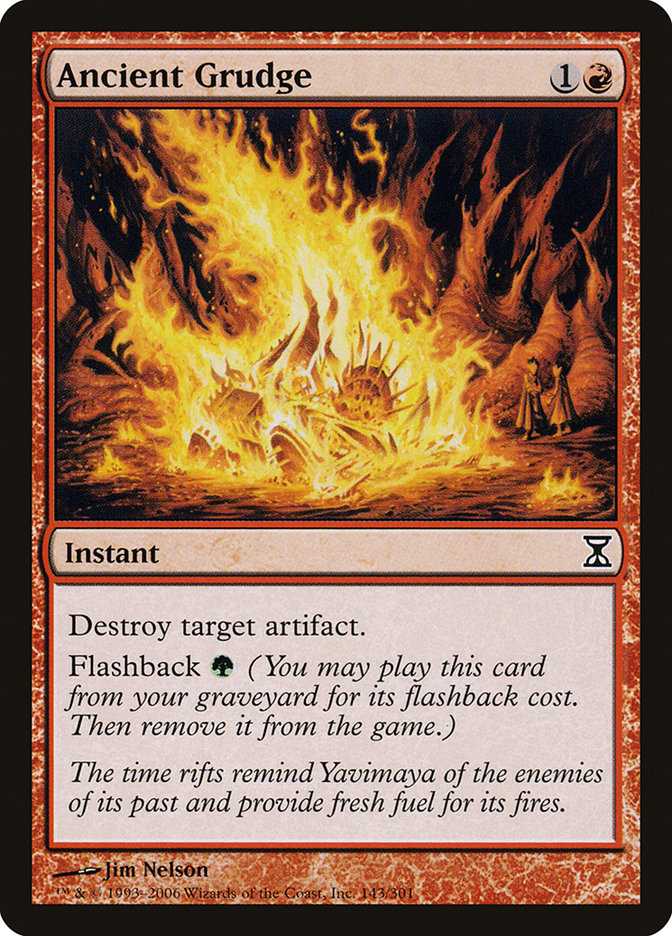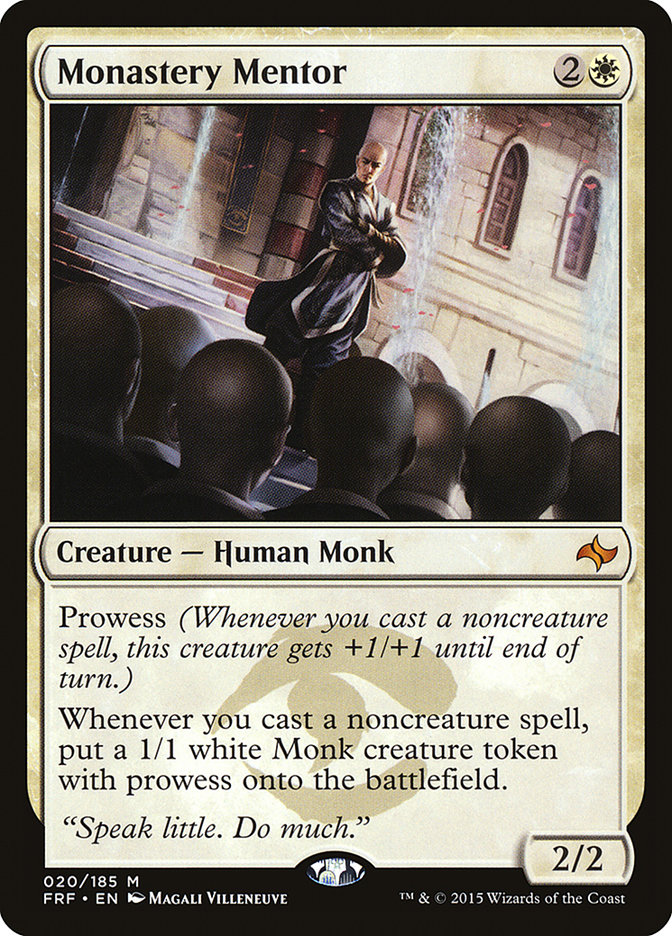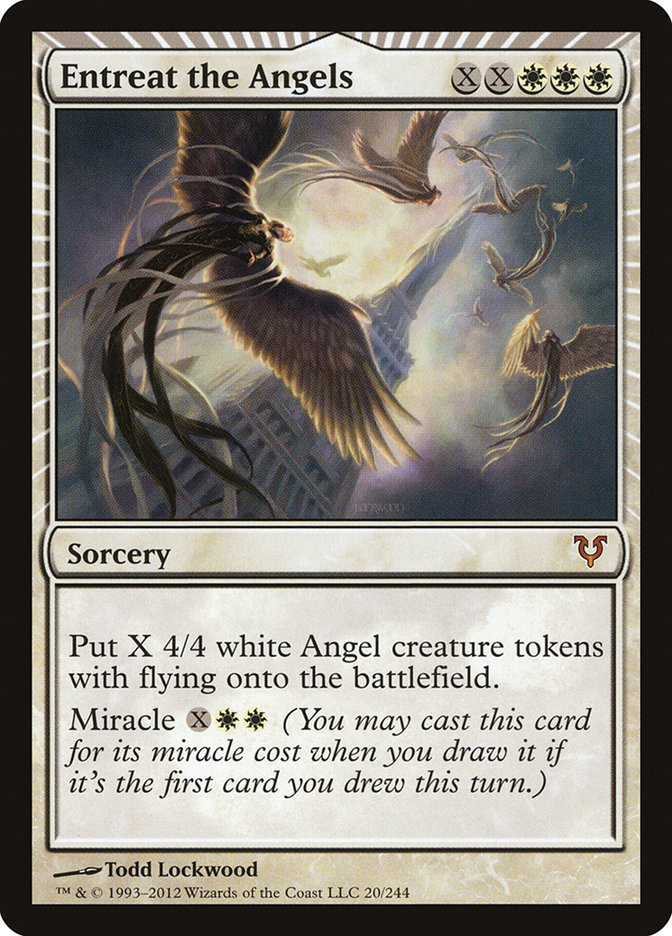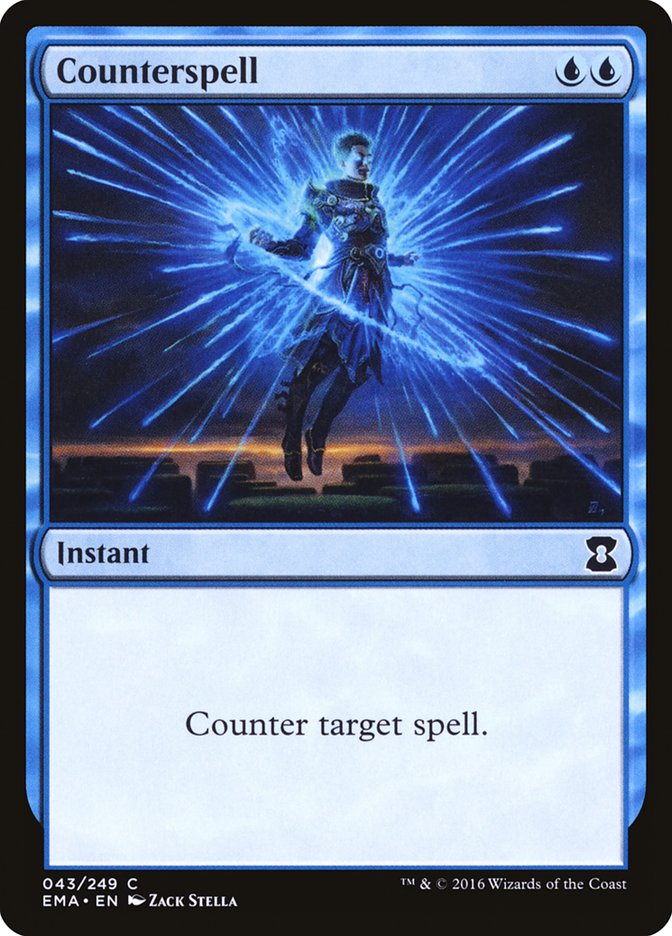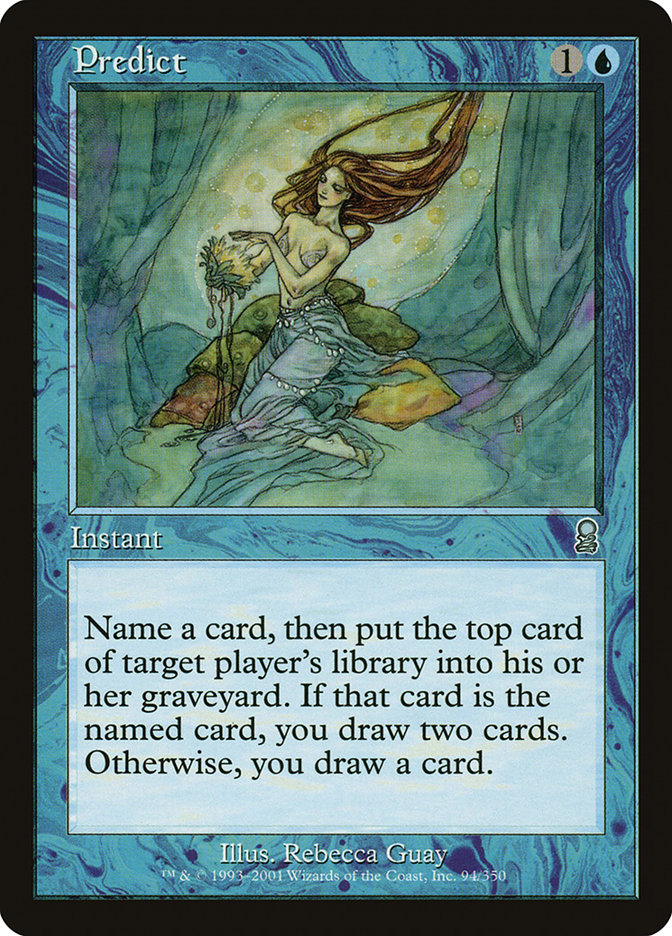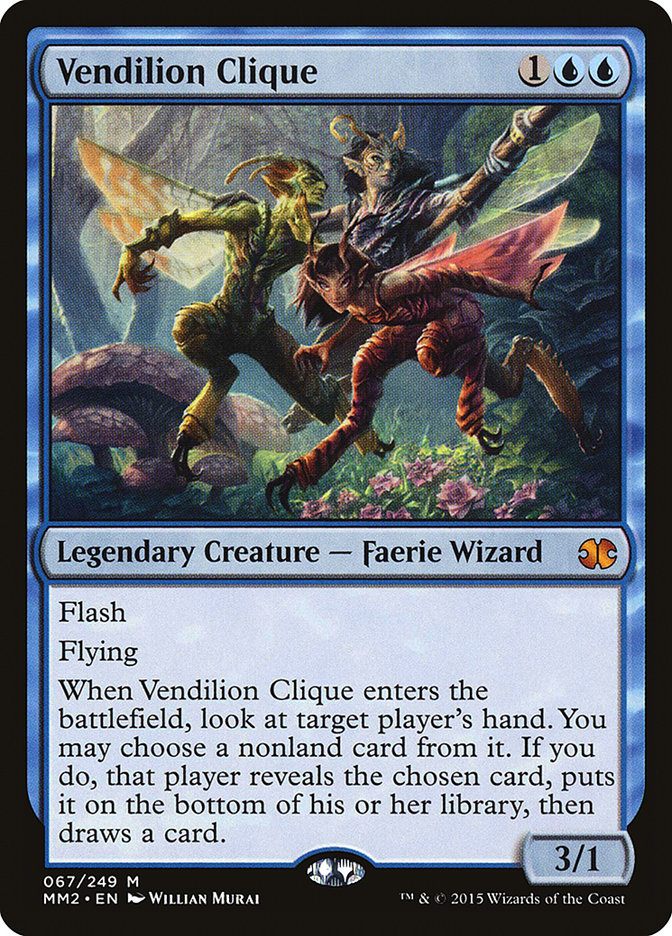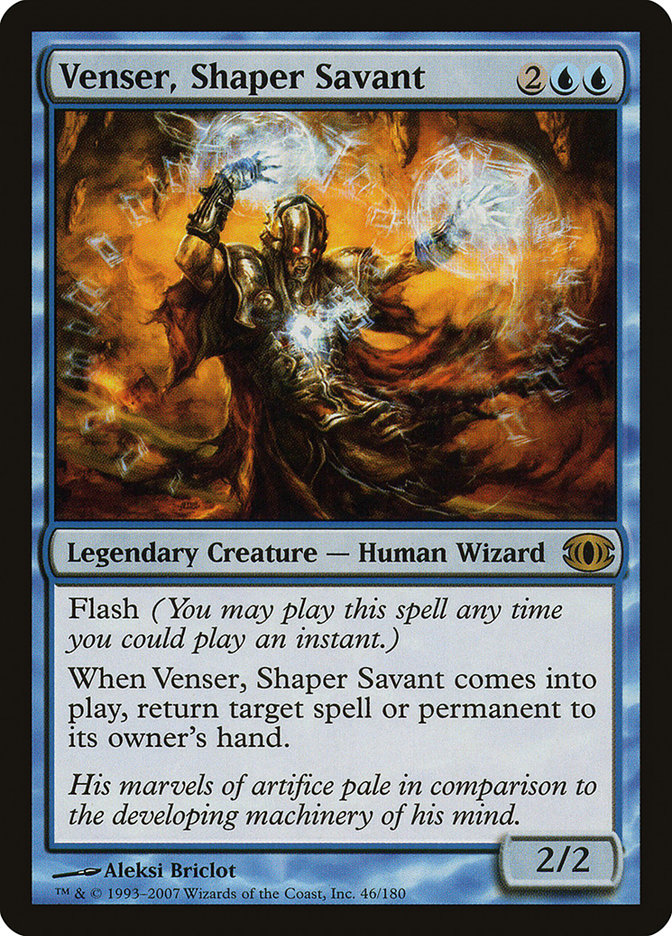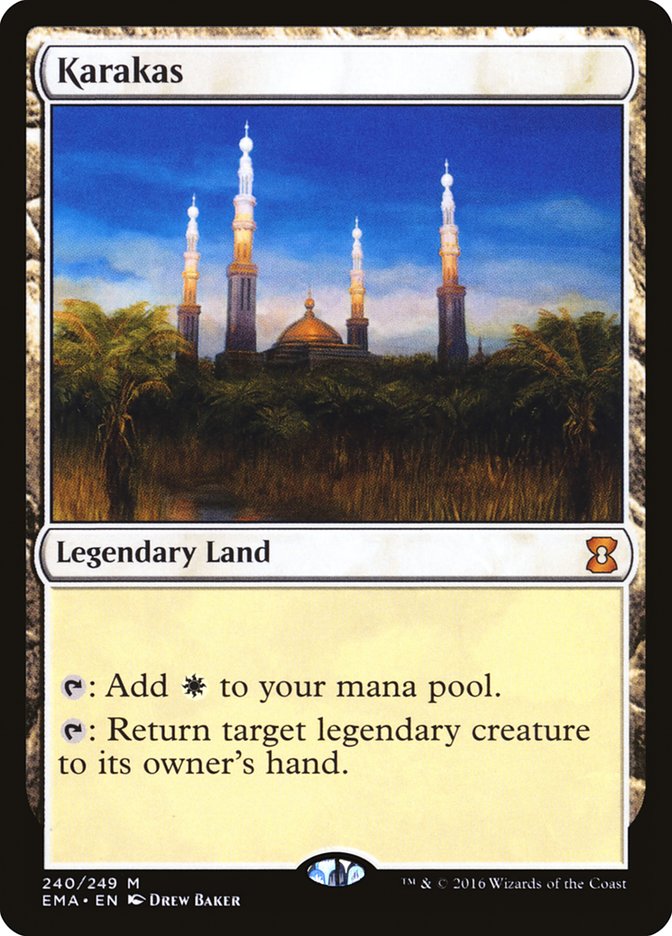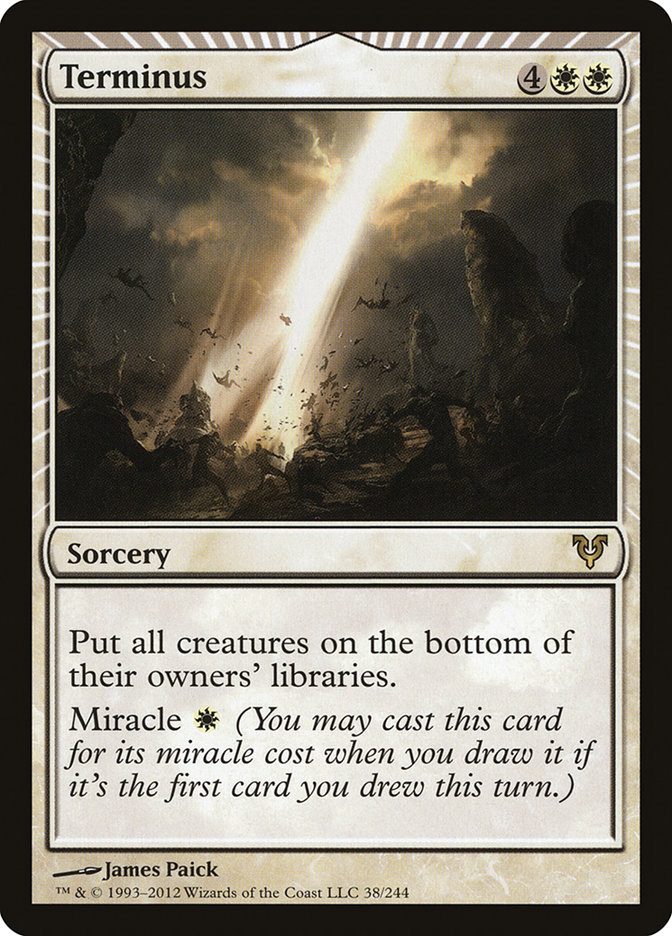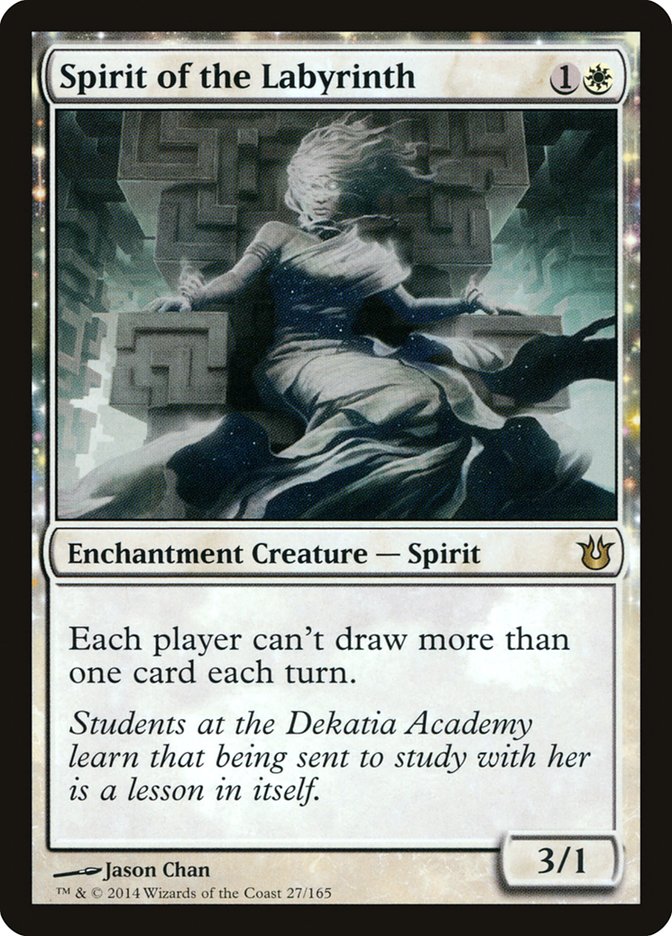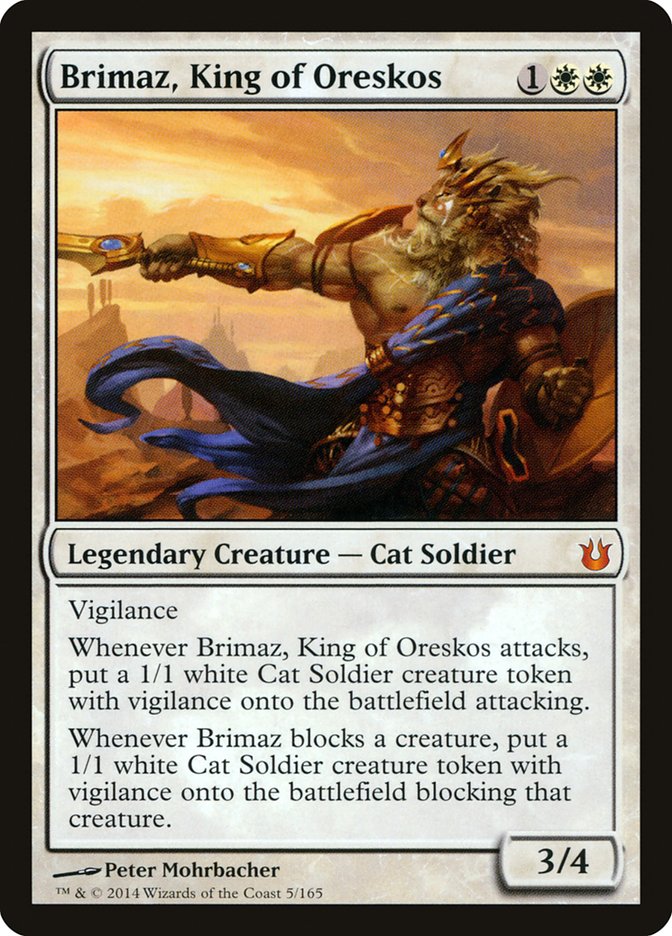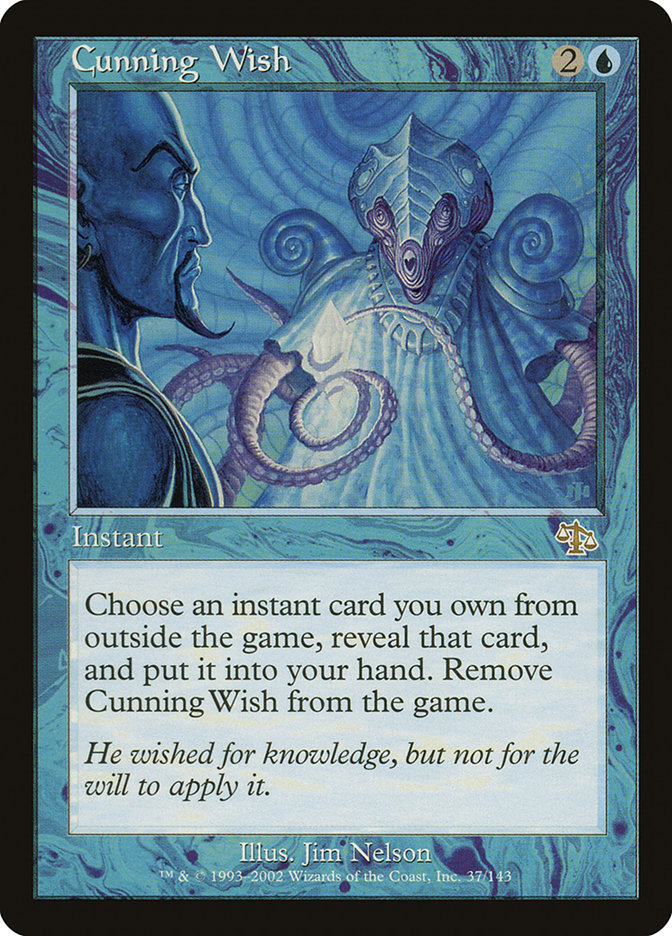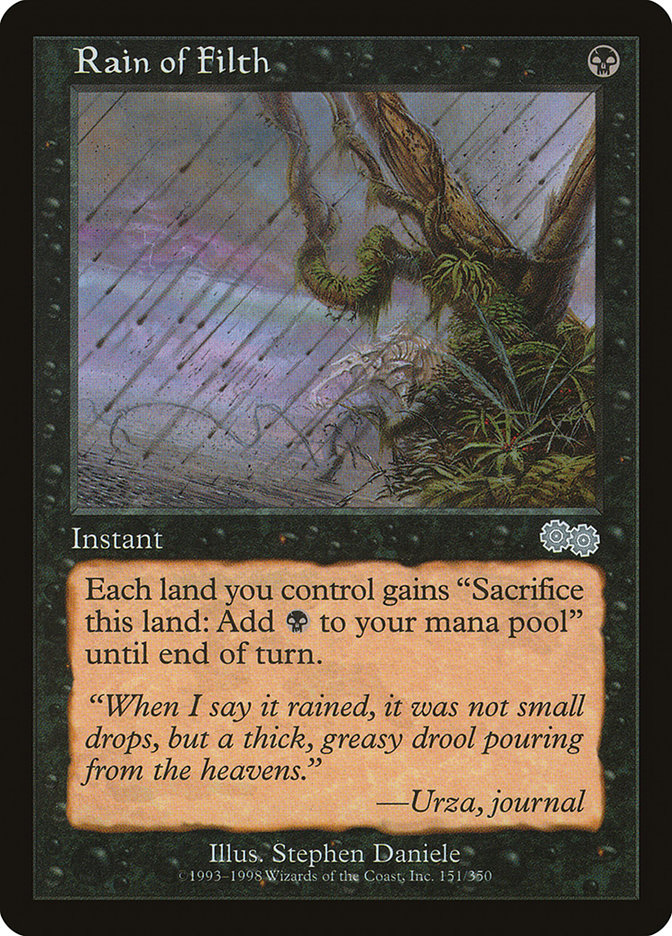Legacy: The Brainstorm Experience…
There’s something weird and beautiful about a format that, despite containing 70%+ Brainstorms (and usually Force of Will) for over a decade, continues to be rich and diverse. The format really is truly balanced around Brainstorm and Force of Will existing, and it works.
This weekend featured two Legacy Grand Prix, the first such GPs since the banning of Eye of Ugin in Modern. Would the Eldrazi invasion continue to work its way up through the powered formats? After all, we’ve already seen the Eldrazi showing up in Legacy on The SCG Tour®.
While the metagames didn’t shake out exactly the same on both sides of the Atlantic, Eldrazi Aggro made an appearance at both. Here’s a look at the Top 100 Day 2 metagame at both #GPColumbus and #GPPrague, as well as the Top 32 metagame of Prague weighted by finish. The combined meta weights both GPs equally, with Prague’s Day 2 metagame and Top 32 metagame weighted equal to each other.
Legacy Metagame Breakdown
|
Archetype |
Day 2 Columbus |
Day 2 Prague |
Top 32 Prague |
Combined Meta |
|
Grixis Delver |
16% |
7% |
17.5% |
14.1% |
|
Miracles |
13% |
12% |
17.5% |
13.9% |
|
Shardless Sultai |
14% |
12% |
12.7% |
13.2% |
|
Eldrazi |
9% |
15% |
4.8% |
9.5% |
|
Death&Taxes |
8% |
4% |
11.1% |
7.8% |
|
Storm |
6% |
4% |
12.7% |
7.2% |
|
Show&Tell |
5% |
6% |
4.8% |
5.2% |
|
Infect |
7% |
3% |
2.4% |
4.9% |
|
Temur Delver |
1% |
3% |
6.3% |
2.8% |
|
Stoneblade |
5% |
1% |
0.0% |
2.8% |
|
Lands |
2% |
5% |
0.0% |
2.3% |
|
4cLoam |
2% |
5% |
0.0% |
2.3% |
|
Sultai Delver |
0% |
6% |
1.2% |
1.8% |
|
Reanimator |
2% |
1% |
1.2% |
1.6% |
|
Elves |
1% |
3% |
0.0% |
1.3% |
|
U/R Delver |
0% |
2% |
2.4% |
1.1% |
|
Jund |
1% |
2% |
0.0% |
1.0% |
|
Goblins |
2% |
0% |
0.0% |
1.0% |
|
Painter |
0% |
1% |
2.4% |
0.9% |
|
Merfolk |
0% |
2% |
0.0% |
0.5% |
|
Grixis Control |
0% |
2% |
0.0% |
0.5% |
|
Misc |
2% |
5% |
0.0% |
2.3% |
Geez, that is a lot of decks. This format really has a lot, doesn’t it?
It is interesting that the three most popular archetypes are:
1) Aggro Brainstorm
2) Control Brainstorm
3) Midrange Brainstorm
The next two decks are non-blue aggro decks, and interestingly, Eldrazi Aggro and Death and Taxes are actually quite similar. They both have Hatebears components, some mana denial, and non-permission disruption.
Finally, rounding out the 5%+ archetypes, we’ve got a couple of Combo Brainstorm decks…
Let’s collapse that down a bit and look at a table a little more manageable:
Legacy Metagame
|
Archetype |
Day 2 Columbus |
Day 2 Prague |
Top 32 Prague |
Metagame |
|
Delver |
17% |
18% |
27.4% |
19.9% |
|
Miracles |
13% |
12% |
17.5% |
13.9% |
|
Shardless |
14% |
12% |
12.7% |
13.2% |
|
Eldrazi |
9% |
15% |
4.8% |
9.5% |
|
Death&Taxes |
8% |
4% |
11.1% |
7.8% |
|
Storm |
6% |
4% |
12.7% |
7.2% |
|
7% |
7% |
6.0% |
6.8% |
|
|
Infect |
7% |
3% |
2.4% |
4.9% |
|
Depths |
4% |
10% |
0.0% |
2.8% |
|
Stoneblade |
5% |
1% |
0.0% |
2.8% |
|
Tribal Aggro |
3% |
5% |
0.0% |
2.8% |
|
Misc |
3% |
10% |
2.4% |
4.6% |
With a little tighter of a view, we see a number of interesting pictures emerge. To start with, while the top three decks are “fair blue decks” and make up almost half the field, the rest of the format has a very different texture:
4. Aggro
5. Aggro
6. Combo
7. Combo
8. Combo
9. Combo
10. Fair Blue Deck
11. Aggro
The biggest differences between the two Grand Prix metagames were:
? The US had nearly equal parts Eldrazi and Death and Taxes, while the European side had nearly double the amount of Eldrazi and half the amount of Death and Taxes.
? The US Combo decks were mostly blue-based (Storm, Show and Tell, Infect), while the European GP featured a much heavier concentration of land-based combo decks.
? Stoneforge Mystic appeared in 13% of US decks but was nearly non-existent on the European side.
It’s going to be interesting, looking at the Top 32 of GP Columbus. Just four macro-archetypes overperformed on Day 2 of GP Prague:
? Delver
? Miracles
? Death and Taxes
? Storm
While Delver and Miracles were roughly similar in popularity at both GPs, Death and Taxes and Storm were both more popular in the US. Those two continuing to overperform would be impressive.
On the flipside, Eldrazi aggro underperformed. It was fine; it wasn’t like it was out of its league or anything. It’s just at a very appropriate-to-Legacy level of power, and the format was gunning for it a disproportionate amount. Despite nine copies in the Top 100 going into Day 2 of #GPColumbus and fifteen in #GPPrague, Eldrazi failed to put any of its pilots in the Top 8. The highest-finishing Eldrazi deck was Arnaud Soumet’s fifteenth-place list from Prague:
Creatures (26)
- 4 Simian Spirit Guide
- 4 Endless One
- 2 Endbringer
- 4 Eldrazi Mimic
- 4 Reality Smasher
- 4 Thought-Knot Seer
- 4 Matter Reshaper
Lands (25)
Spells (9)
Sideboard

Mono-Colorless has gained nearly universal adoption among Legacy Eldrazi Aggro decks, thanks to Ancient Tomb and City of Traitors as support for Eldrazi Temple and Eye of Ugin.
Anyone that’s ever faced an Eldrazi aggro deck that drew Eldrazi Temple and Eye of Ugin knows just how brutal it can be when they draw two lands that produce two mana. Of course, Modern decks only opened that way a quarter of the time. They also need at least one Eldrazi Temple, as double Eye of Ugin doesn’t work.
By contrast, Legacy Eldrazi Aggro has fifteen lands that make two mana, adding up to a 65% chance of having four virtual mana on turn 2. Additionally, Ancient Tomb and City of Traitors can actually play non-Eldrazi spells on the cheap, too. Along with Simian Spirit Guide, this deck can reliably cast Chalice of the Void on turn 1 the vast majority of times it draws one.
It’s brutal enough, shutting down Brainstorms and Ponders, but if the opposing deck relies on one-drops for interaction too, they are going to be in a world of hurt. As a result, we saw a big increase of Sultai, while Jeskai and Esper fell off the map.
Abrupt Decay can get a blue deck out from under a Chalice of the Void (even if set to two) and happens to be amazing in the format anyway, thanks to its strength against Counterbalance + Sensei’s Divining Top (not to mention a format full of under-costed cards and Force of Will).
Shardless Sultai, like that played Lukas Blohan, has a number of advantages that make it a stronger choice against Eldrazi than a lot of blue decks:
Creatures (14)
Planeswalkers (2)
Lands (20)
Spells (24)

For starters, with just eleven cards that actually cost one, this is one of the least vulnerable blue decks to Chalice of the Void. In addition to Abrupt Decay and Maelstrom Pulse as insurance, it’s also just a deck with costs well-spread-out.
Baleful Strix is just an amazing card in its own right. They would be unlikely to print this card in a Standard-legal set. I mean, a 1/1 flier with deathtouch would be a reasonable card to print. To add “draw a card?” Now we’re talking about some Bloodbraid Elf-type of time.
A hyper-efficient deathtouch creature is a fantastic resource against Eldrazi like Thought-Knot Seer and Reality Smasher (though Endbringer has some game). The extra card matters a lot for keeping up with the resource attrition game the Eldrazi naturally play with all of their two-for-ones and cheap ways to trade resources, like Wasteland and Dismember.
Ancestral Vision is a bigger player in Legacy than Modern, since it’s so easy to reliably set it up to cheat out rather than waiting the full four turns. On turn 2, you can Brainstorm it back into the library, untap, and cast Shardless Agent, casting Ancestral Vision for free.
Another way people are fighting the increased use of Chalice of the Void is by shifting toward Gurmag Angler; Tasigur, the Golden Fang; and Hooting Mandrills as cheap threats that technically have high costs. For instance, Alexander Hayne’s Grixis Delver list is a perfect example of the archetype:
Creatures (14)
Lands (18)
Spells (28)

This style of Grixis is very vulnerable to Chalice of the Void, with nearly two-thirds of its spells costing one (a full 27!). Heaven forbid the Eldrazi deck follows up a turn 1 Chalice with a turn 2 Chalice. While the Sultai decks have plenty of three-drops and Abrupt Decay, Grixis is nearly completely locked out, with the exception of Gurmag Angler (chosen over Tasigur, at least partially, for his ability to win the head-to-head and rumble with Reality Smasher).
A single Ancient Grudge may seem a crazy splash, but obviously the primary reason for the Tropical Island is to be able to exile creatures from graveyards with Deathrite Shaman. Deathrite Shaman also provides four additional sources of green to Flashback Ancient Grudge, even if our Tropical gets Wastelanded.
Remember when some people were doubting and making fun of Tasigur, the Golden Fang, saying that if Tasigur was good, why don’t people play Hooting Mandrills?
Creatures (12)
Lands (18)
Spells (30)

Of course, this list is going to have a helluva time trying to compete with Chalice of the Void, but the delve creatures are also an important part of the anti-Counterbalance plan. Counterbalance decks are most commonly Miracles-based and often have a very tenuous control over the game. A single threat that can puncture the Counterbalance-Top lock can steal games.
Creatures (5)
Planeswalkers (2)
Lands (20)
Spells (33)

Tholance’s list has some interesting tweaks for the new meta. Notice the emphasis on Monastery Mentor, with just a single Entreat the Angels.
He’s also got a 3/3 split between Counterbalance and Counterspell.
Counterspell is an underrated Legacy card that gains value in a format full of Chalice of the Void and Counterbalance. It isn’t just that it costs two; as people are pressured to play more expensive cards, Counterspell gains more of an edge on mana. Countering a spell that costs one is weak. Countering a spell that costs two is fine. Countering a spell that costs three or more is a big win.
A man after my own heart!
Predict is sweet with Brainstorm and Jace, not to mention getting rid of extra Tops. However, it also adds value to our Counterbalances for when we don’t have Top. Opponents will test the water by playing a Brainstorm, wanting to see if their Tarmogoyf will resolve. Then, when they see there isn’t a two on top of your deck, they cast the Goyf. When you Predict your top card correctly, you end up ahead a card anyway; plus, you even get an extra blind flip!
That said, I’m still going to have to go with Joe Lossett on Miracles. Grand Prix Columbus finalist Joe Lossett has got to be the most well-known and experienced Miracles player in the game. When Joe Lossett registers a Miracles list, it is the best Miracles list.
Creatures (8)
Planeswalkers (2)
Lands (22)
Spells (28)

With several Vendilion Cliques and Venser, Shaper Savants, Lossett works his Karakas harder than most.
With five legends that are well-worth bouncing back to his hand, it’s no surprise to see Lossett packing a second copy of Karakas. It’s also just such a good way to grind out the other blue decks. Both Vendilion Clique and Venser are hard to Counterbalance, and the ability to blink them makes them very hard to take out with traditional removal. It’s particularly sweet that Cavern of Souls on Wizards makes them both uncounterable (not to mention Snapcaster Mage, which is particularly nice against Counterbalance and a Chalice on two).
Terminus really is just devastating against Eldrazi Aggro. I mean, it’s hard to get much more efficient than that, and it does what you need done. It even avoids triggering Matter Reshaper!
Of course, while Eldrazi Aggro was the talk of the town, going into the weekend, Death and Taxes was the better-performing non-blue Aggro deck.
Creatures (26)
- 3 Mother of Runes
- 2 Serra Avenger
- 4 Flickerwisp
- 4 Stoneforge Mystic
- 2 Mirran Crusader
- 4 Phyrexian Revoker
- 4 Thalia, Guardian of Thraben
- 1 Banisher Priest
- 1 Brimaz, King of Oreskos
- 1 Spirit of the Labyrinth
Lands (14)
Spells (20)

The Spirit of the Labyrinth, Banisher Priest, and Brimaz may look random, but they make Aether Vial a much harder card to play against.
You only need to Vial down a Spirit of the Labyrinth in response to a Brainstorm once to put the fear of Wescoe into an opponent…
While Eldrazi Aggro is a new force in the metagame, Ancient Tomb and City of Traitors are longtime fixtures. Take Niels Molle’s Sneak and Show deck, which uses it to power out its two namesakes a turn early.
Creatures (6)
Lands (15)
Spells (39)

You gotta admire a deck where plan A is literally Cunning Wish for Intuition, Intuition for Show and Tell, Show and Tell Omniscience onto the battlefield, use Omniscience to cast Griselbrand, use Griselbrand to draw another Cunning Wish, Cunning Wish for Firemind’s Foresight, Firemind’s Foresight for Brainstorm, Impulse, and Cunning Wish, and Cunning Wish for Release the Ants…
I’m not sure that counts as “Plan A.”
Yeah, but Release the Ants!
I’m pretty sure Emrakul is “Plan A.”
Ants!
Oh, you think Release the Ants is filthy, do you?
Yeah, I mean, I know it’s not new, but it’s got to be the filthiest card to Top 8 this weekend, right?
Lands (15)
Spells (45)

Are you kidding me?
Rain of Filth is a Grand Prix-winning Magic: The Gathering card?!
Welcome to Legacy.



